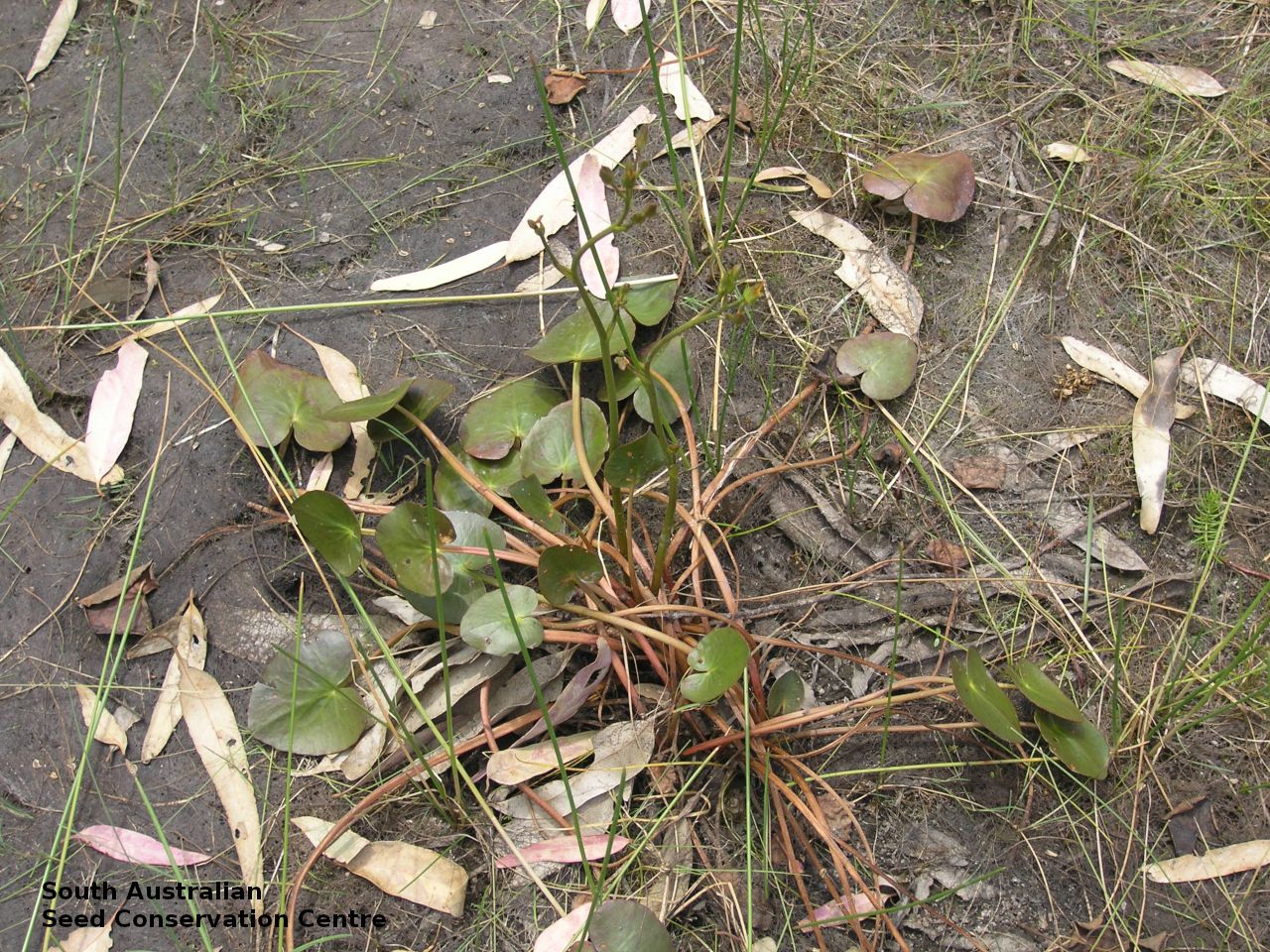
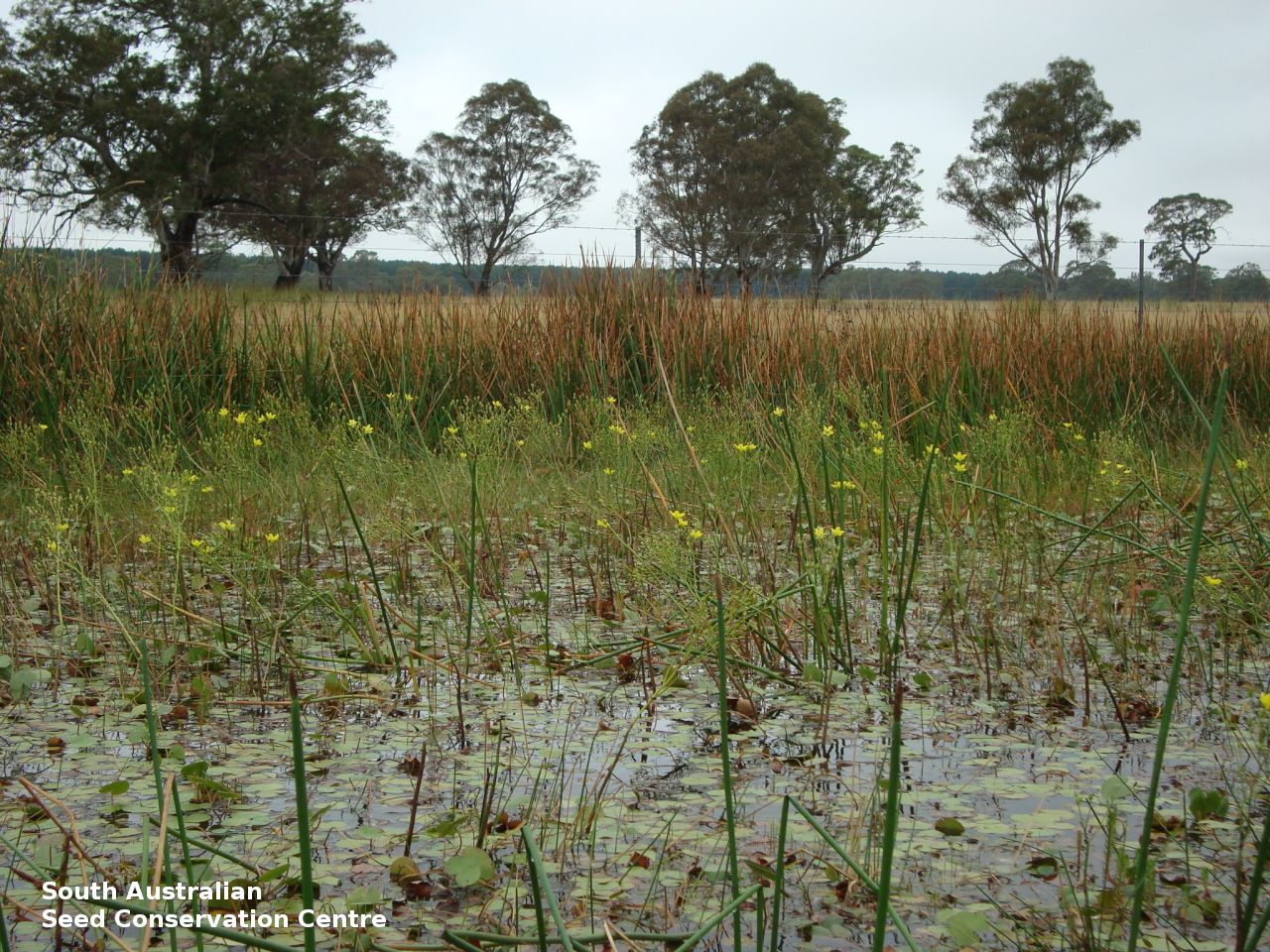
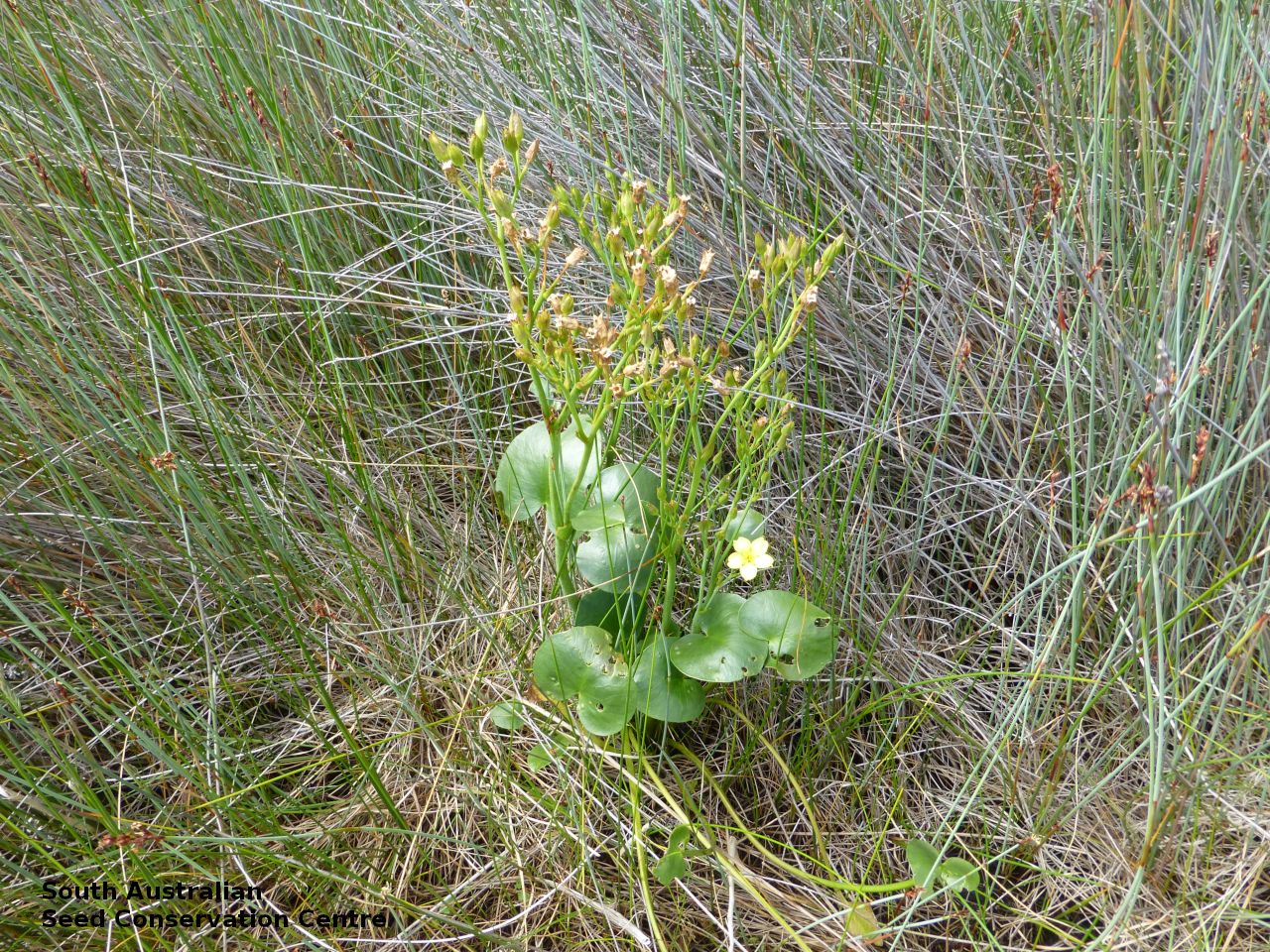
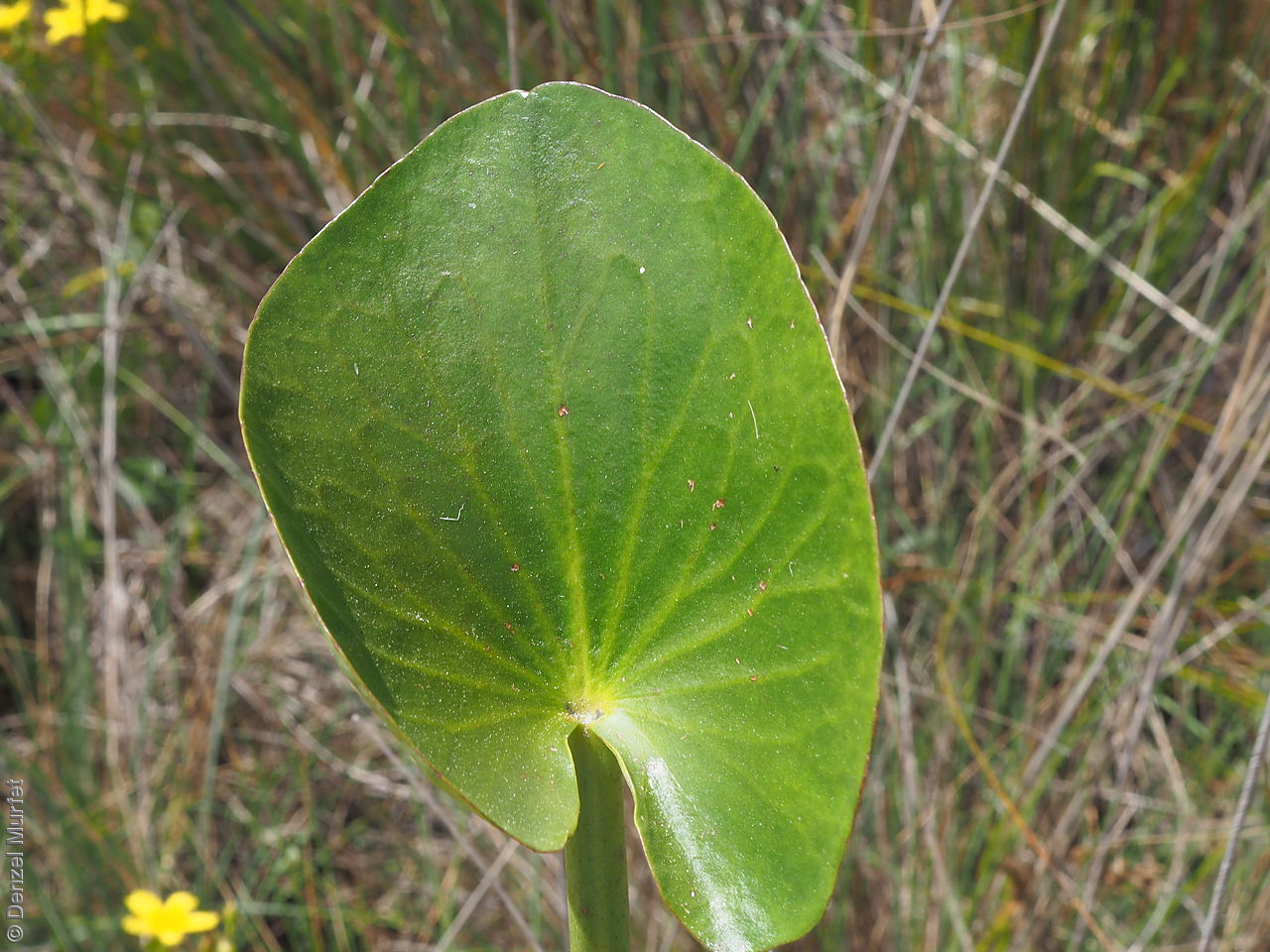
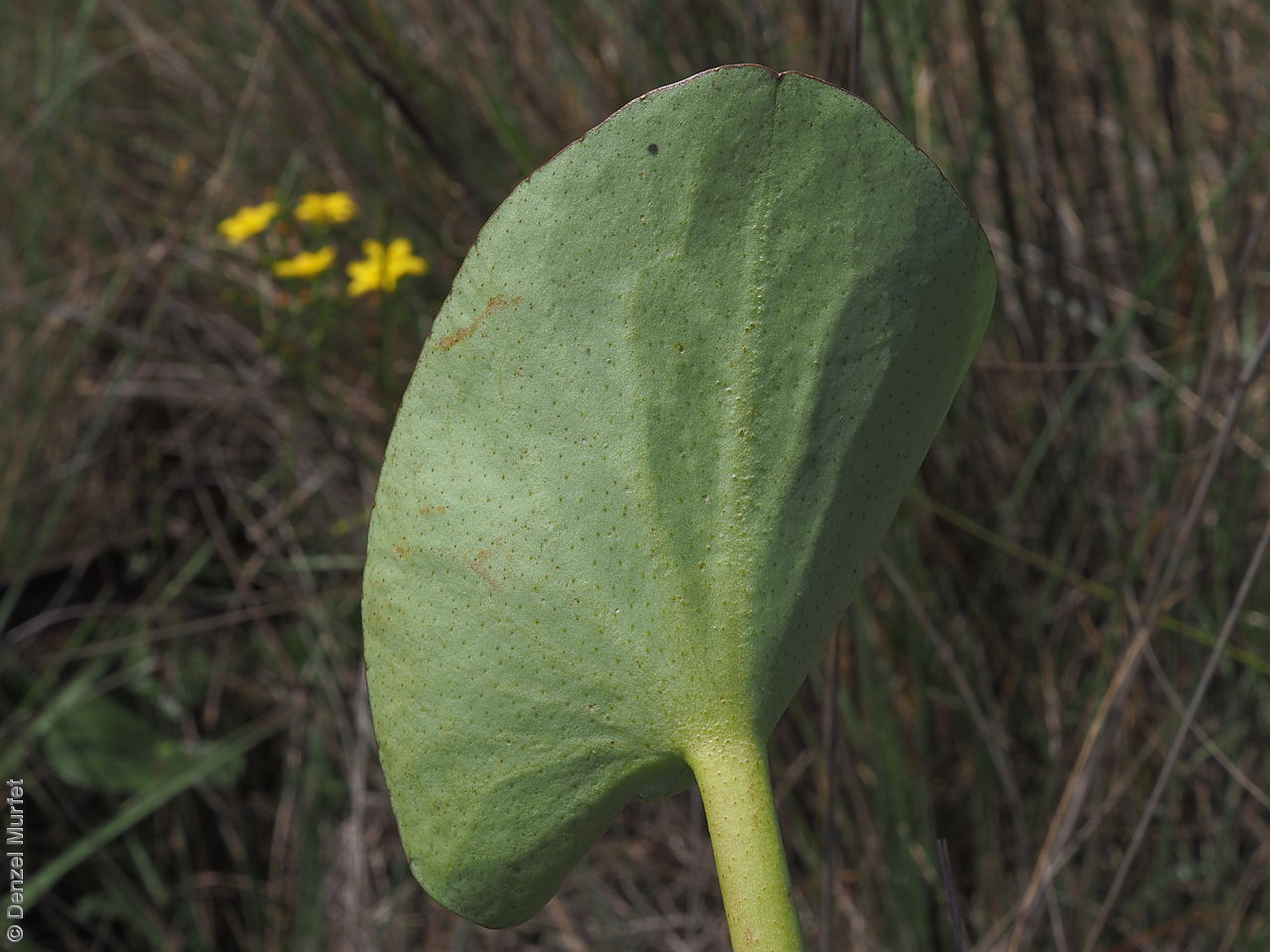
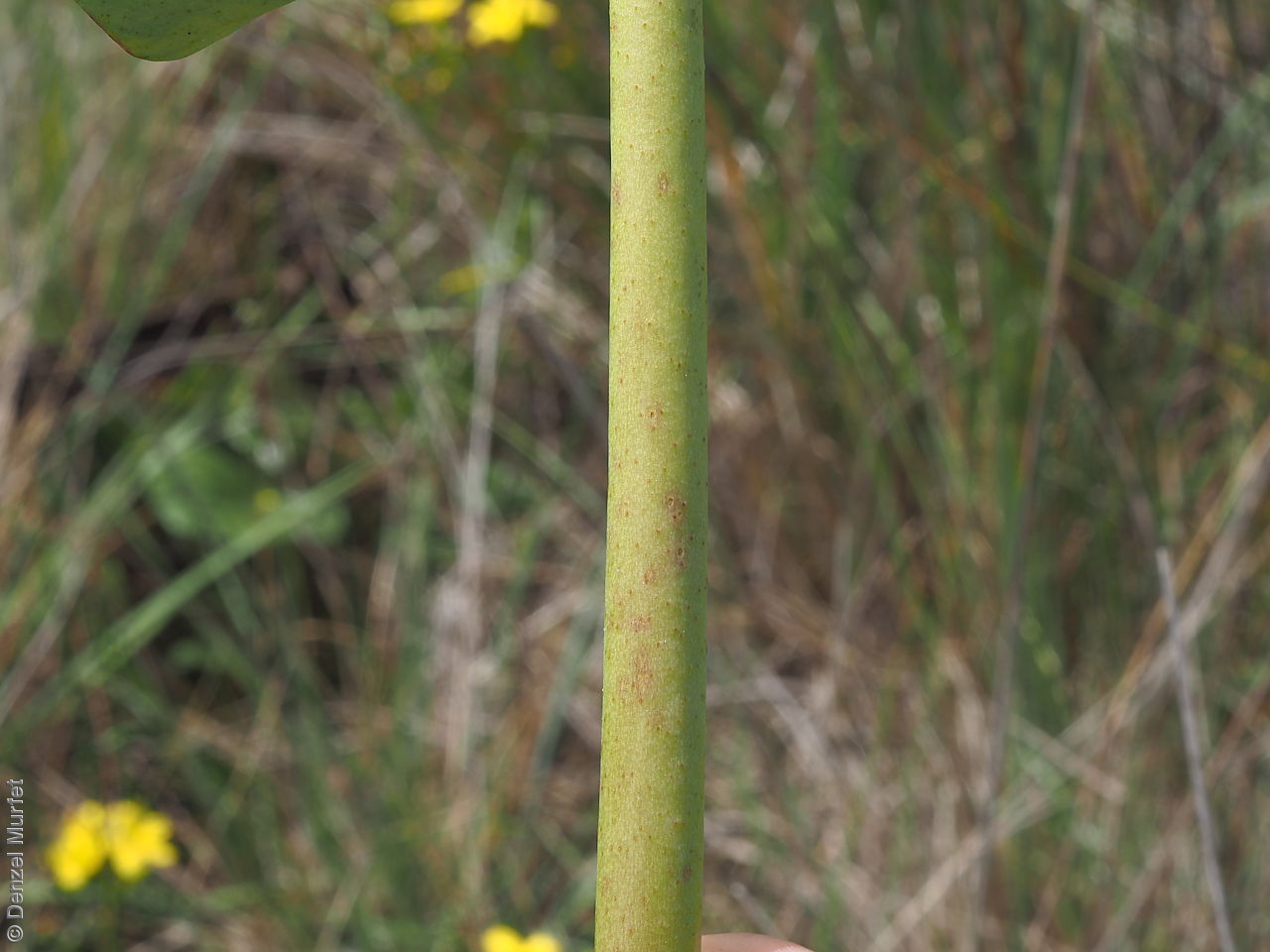
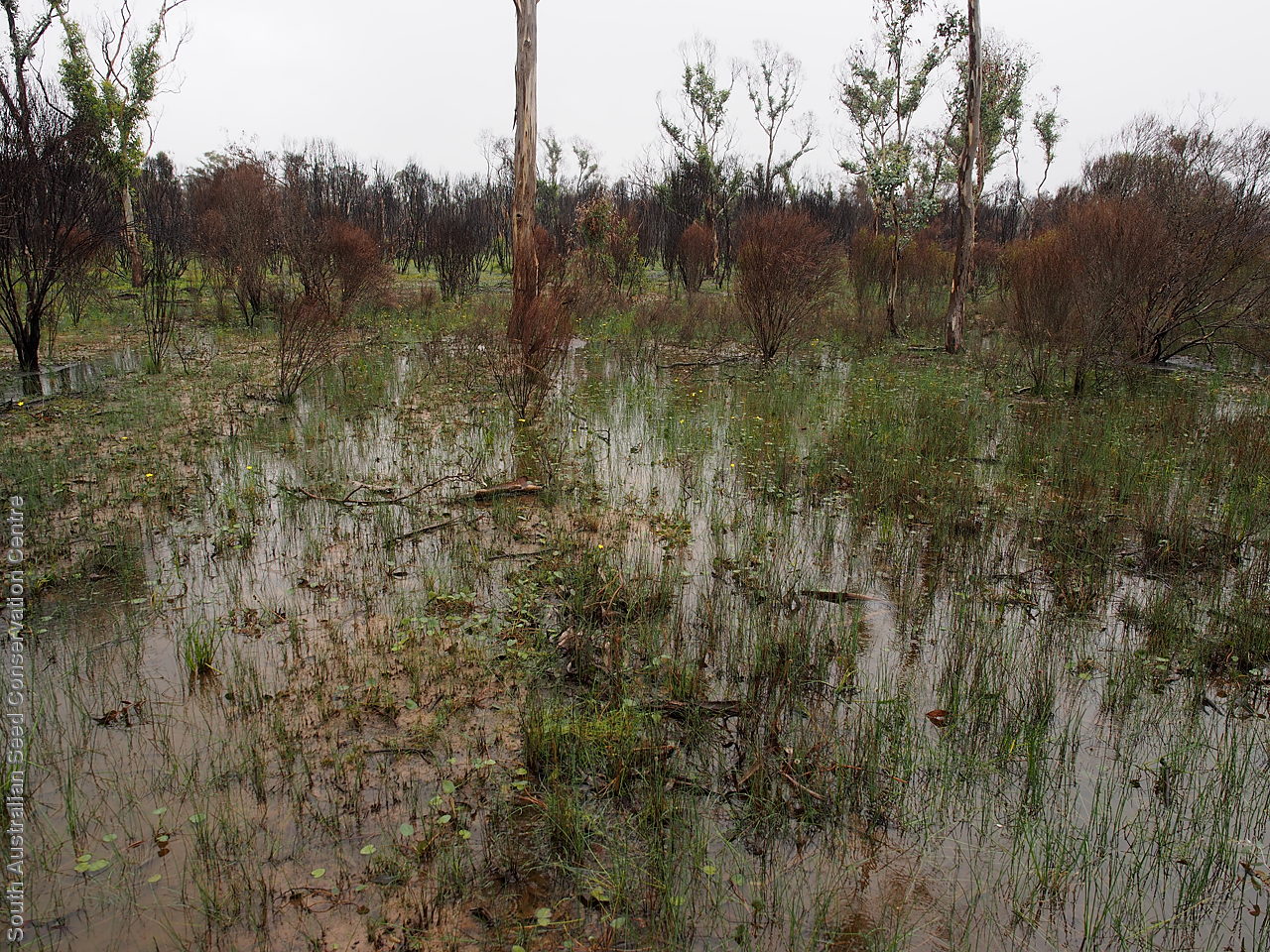
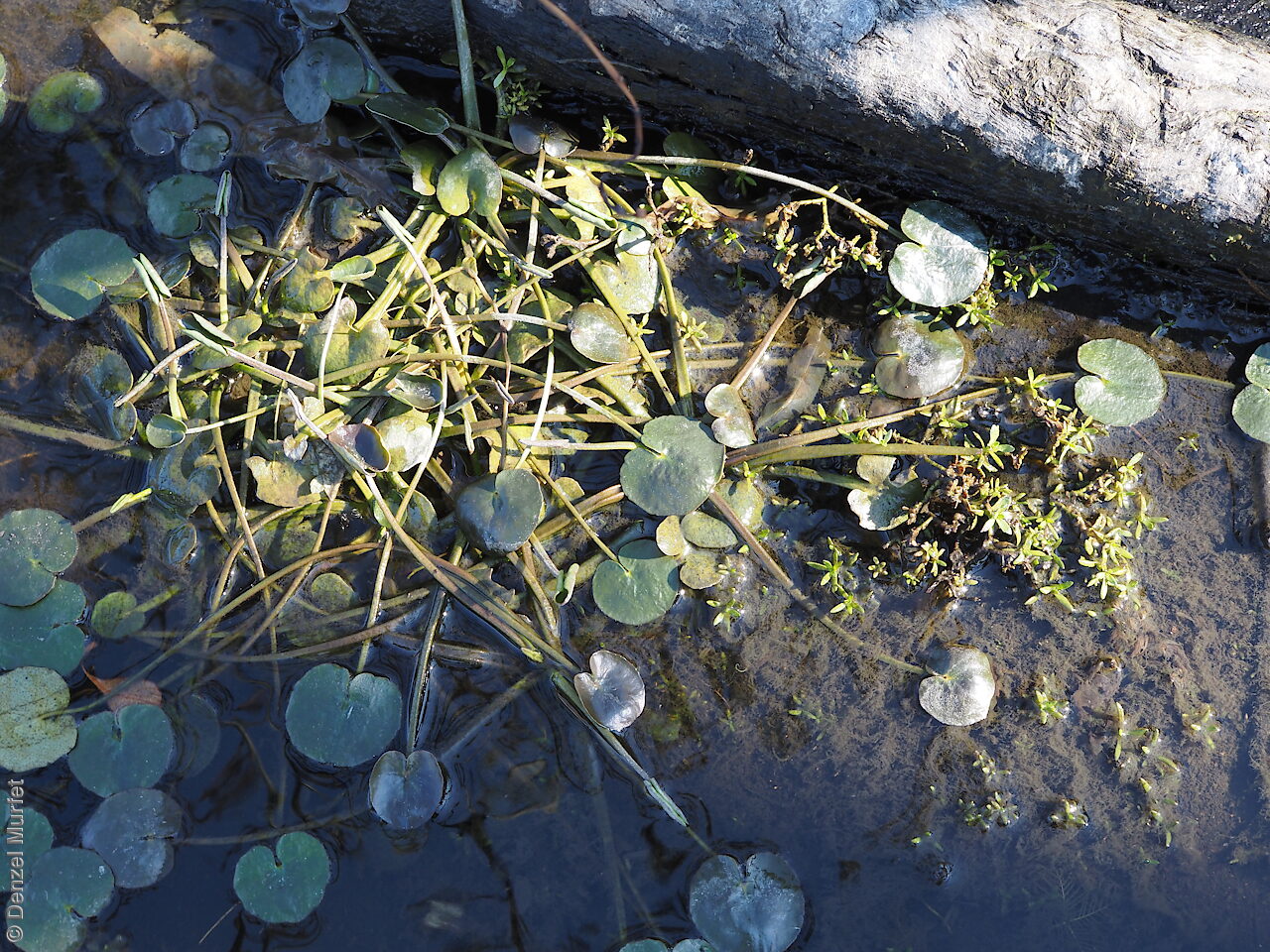
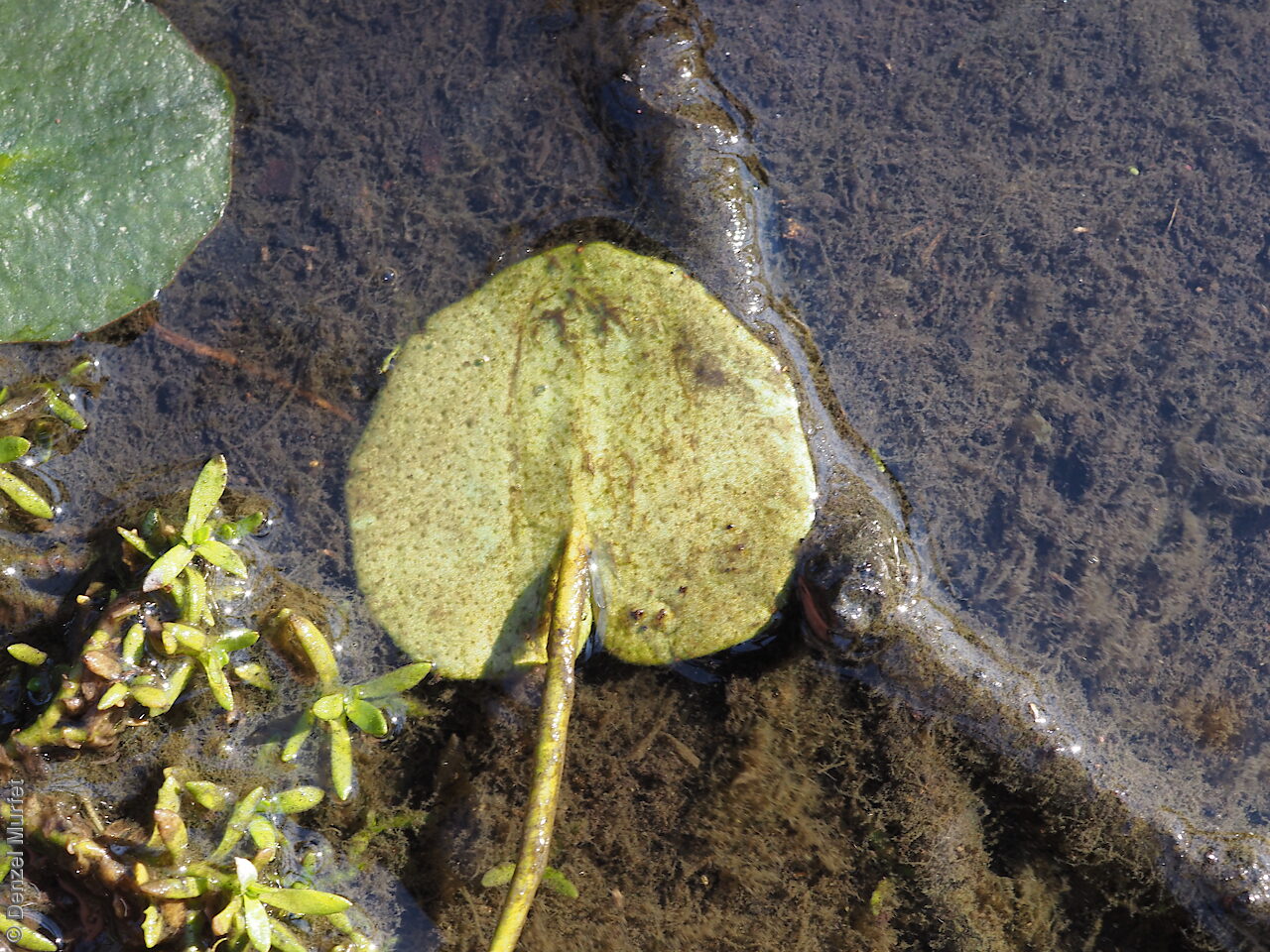
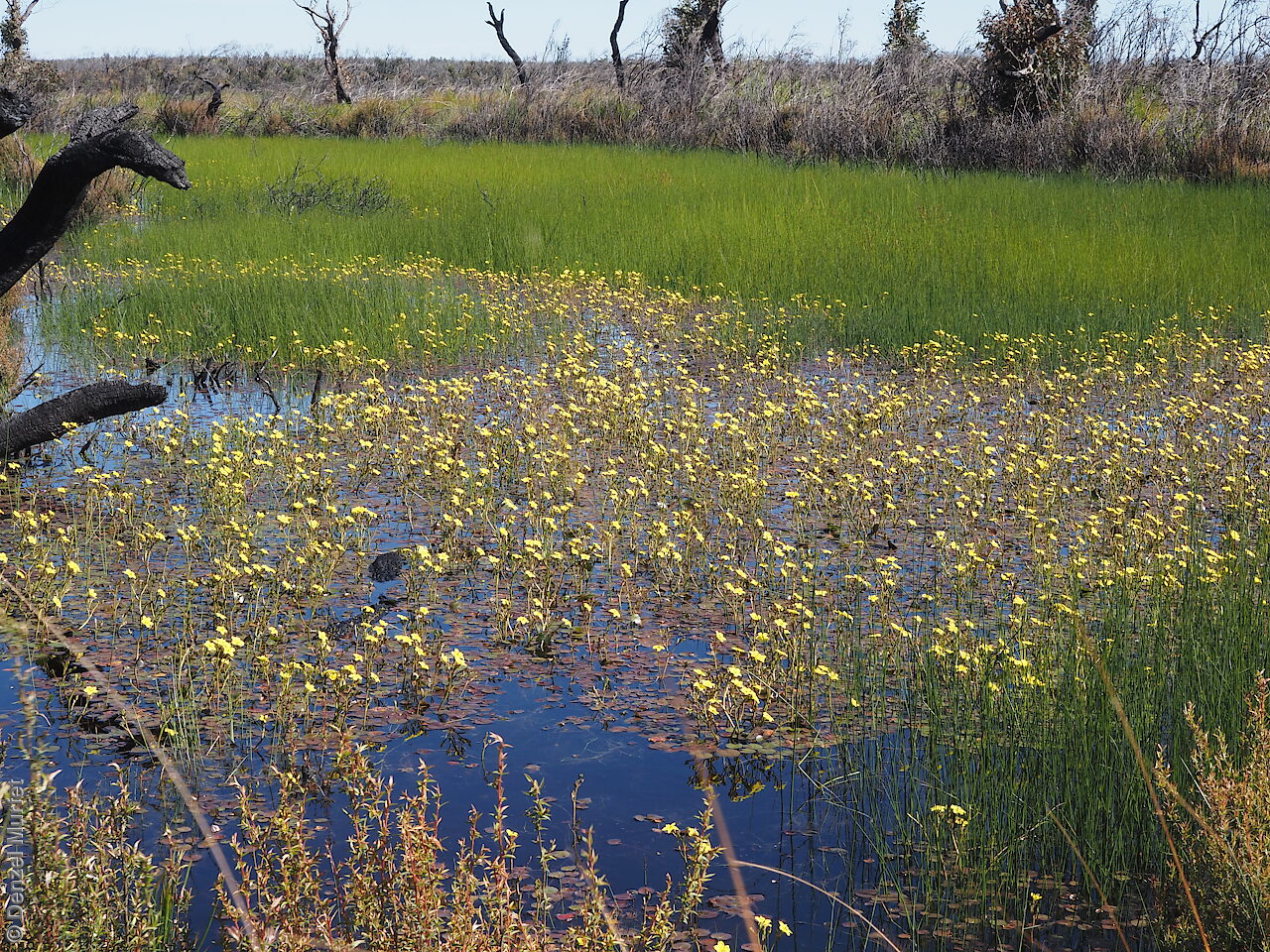
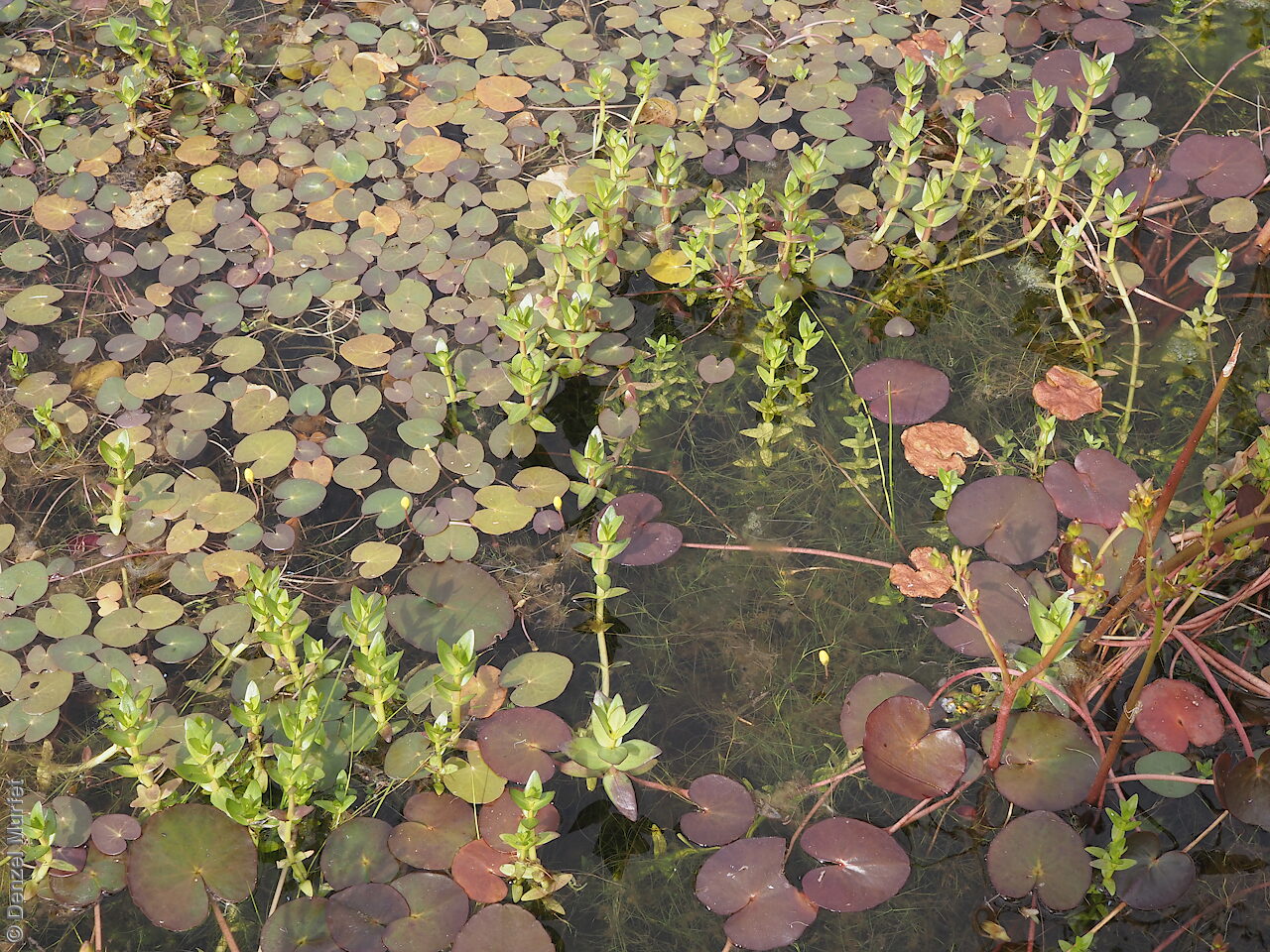
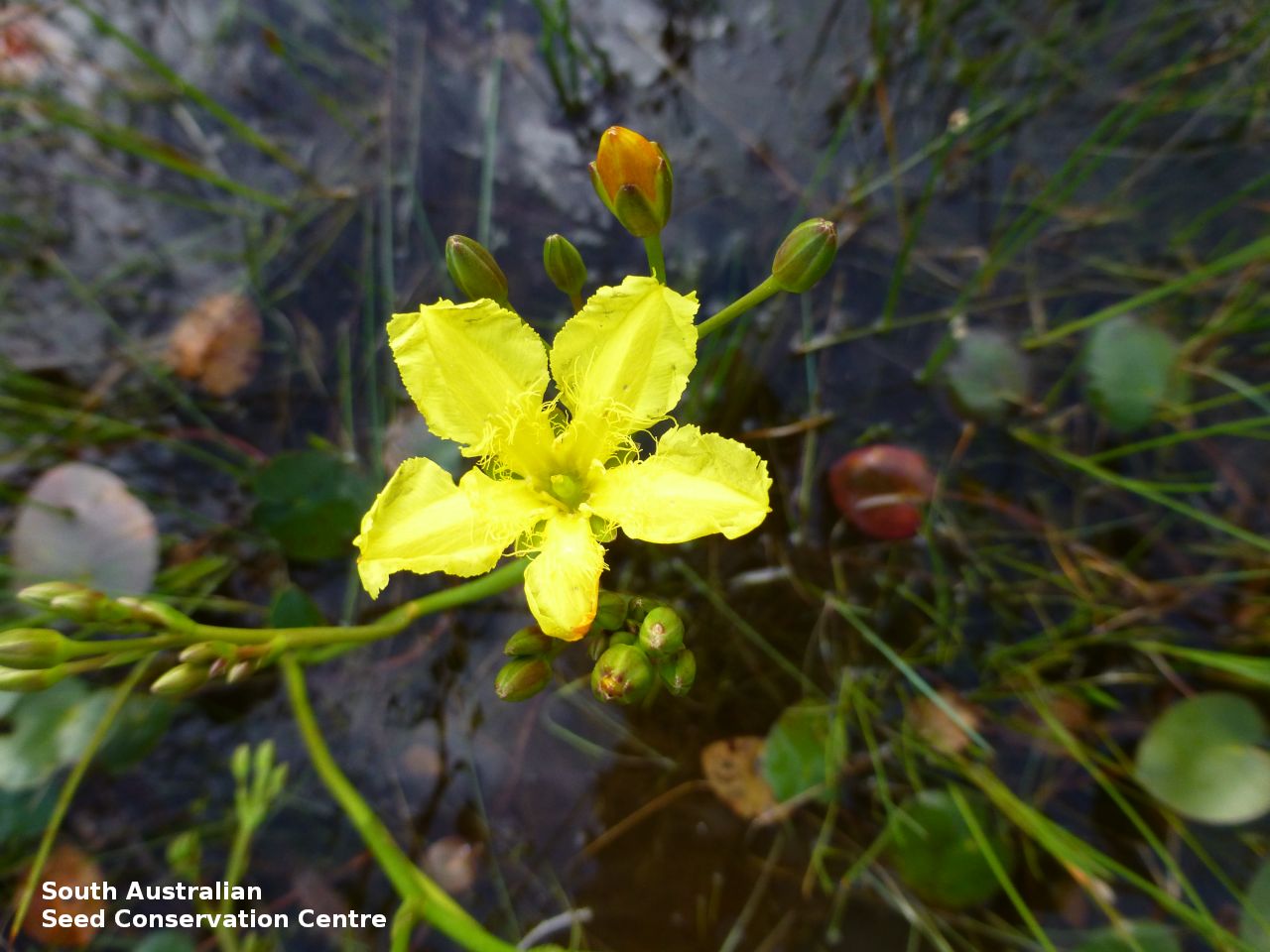
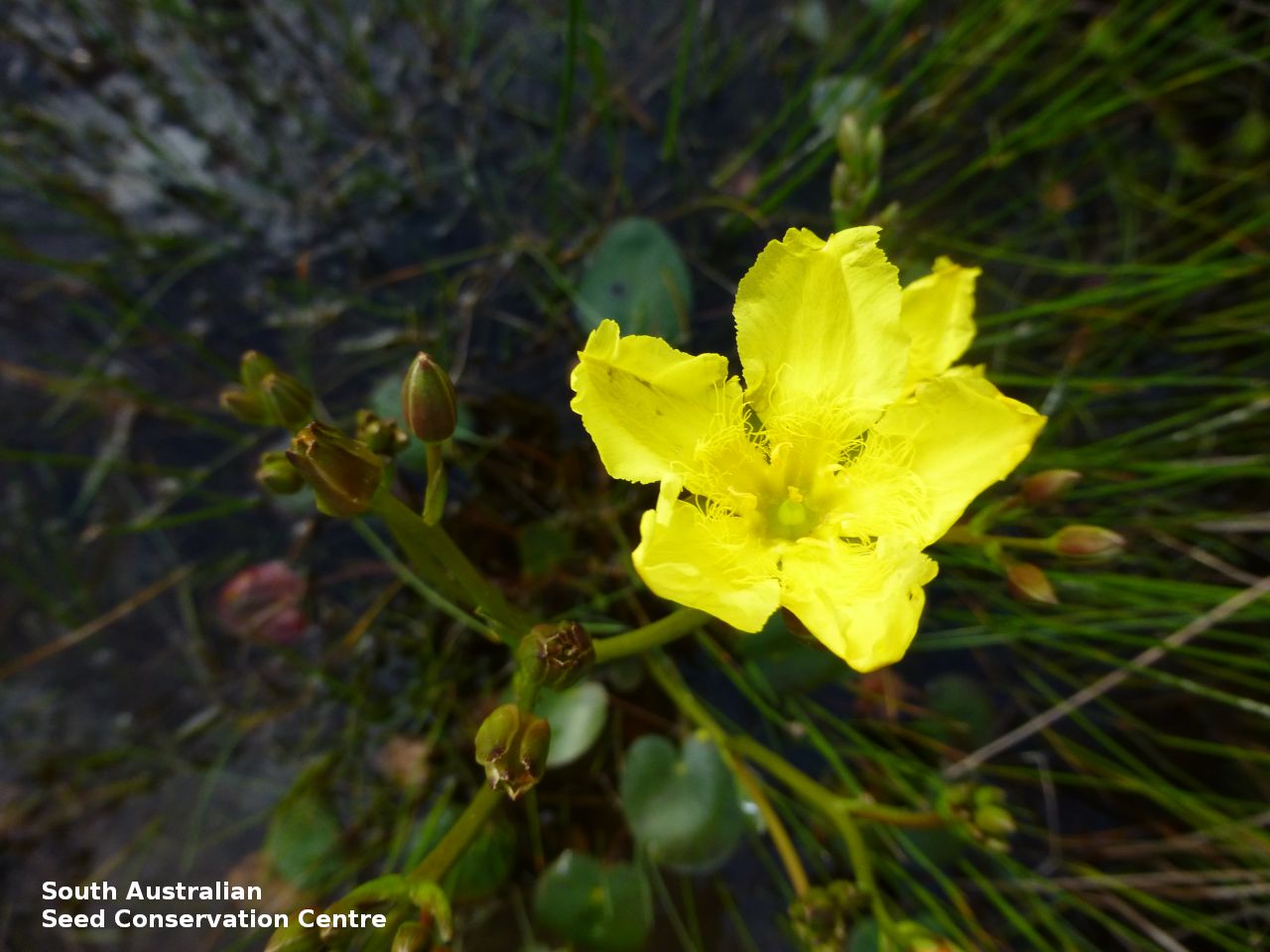
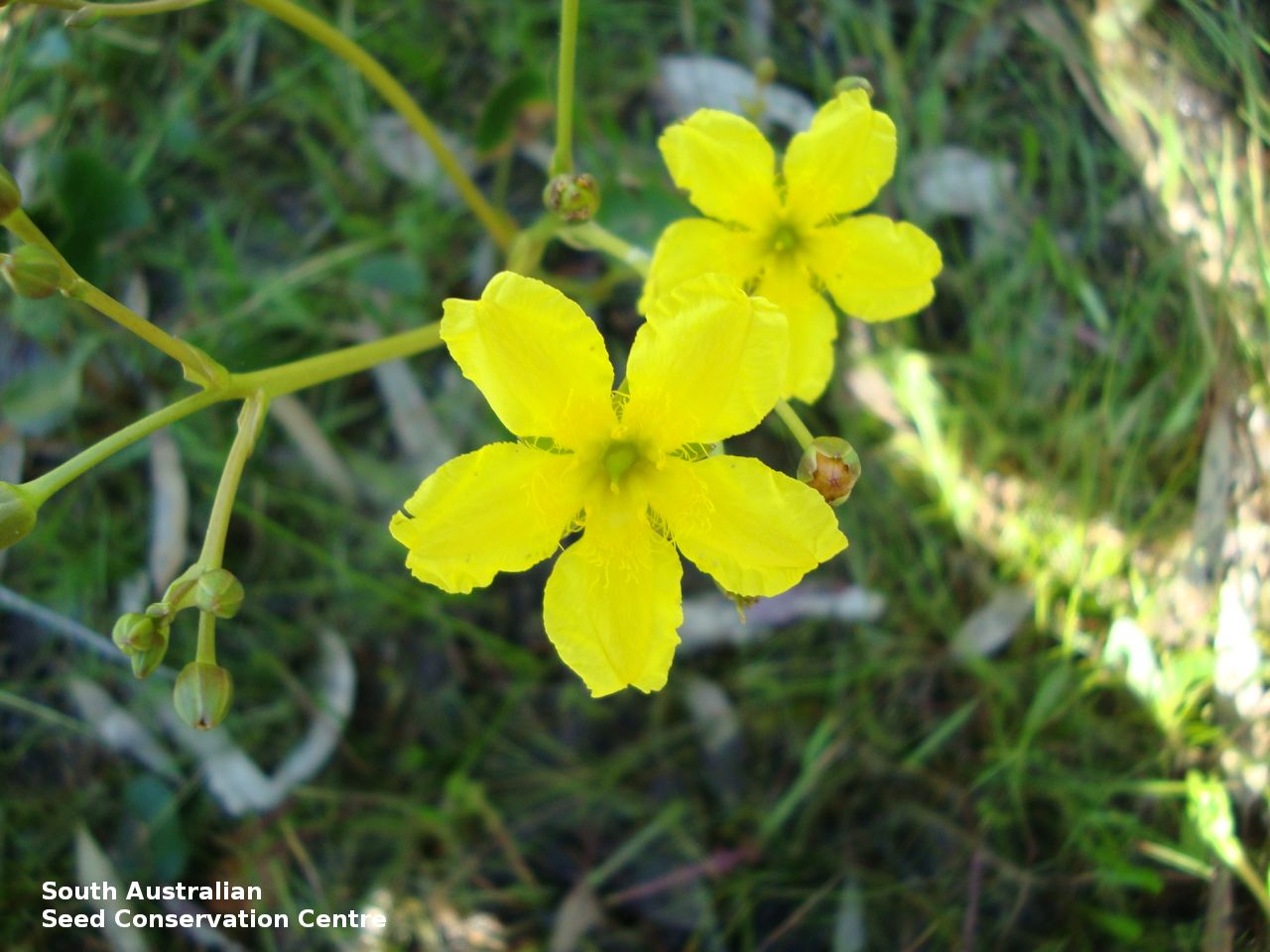
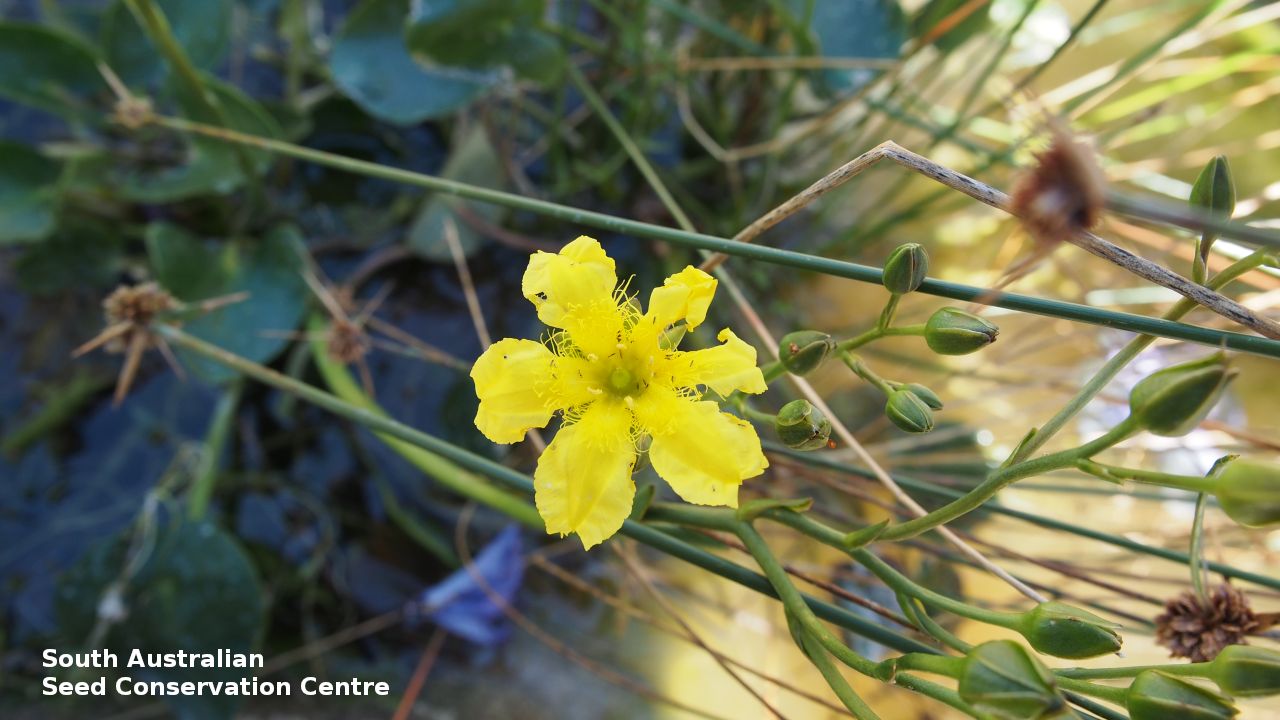
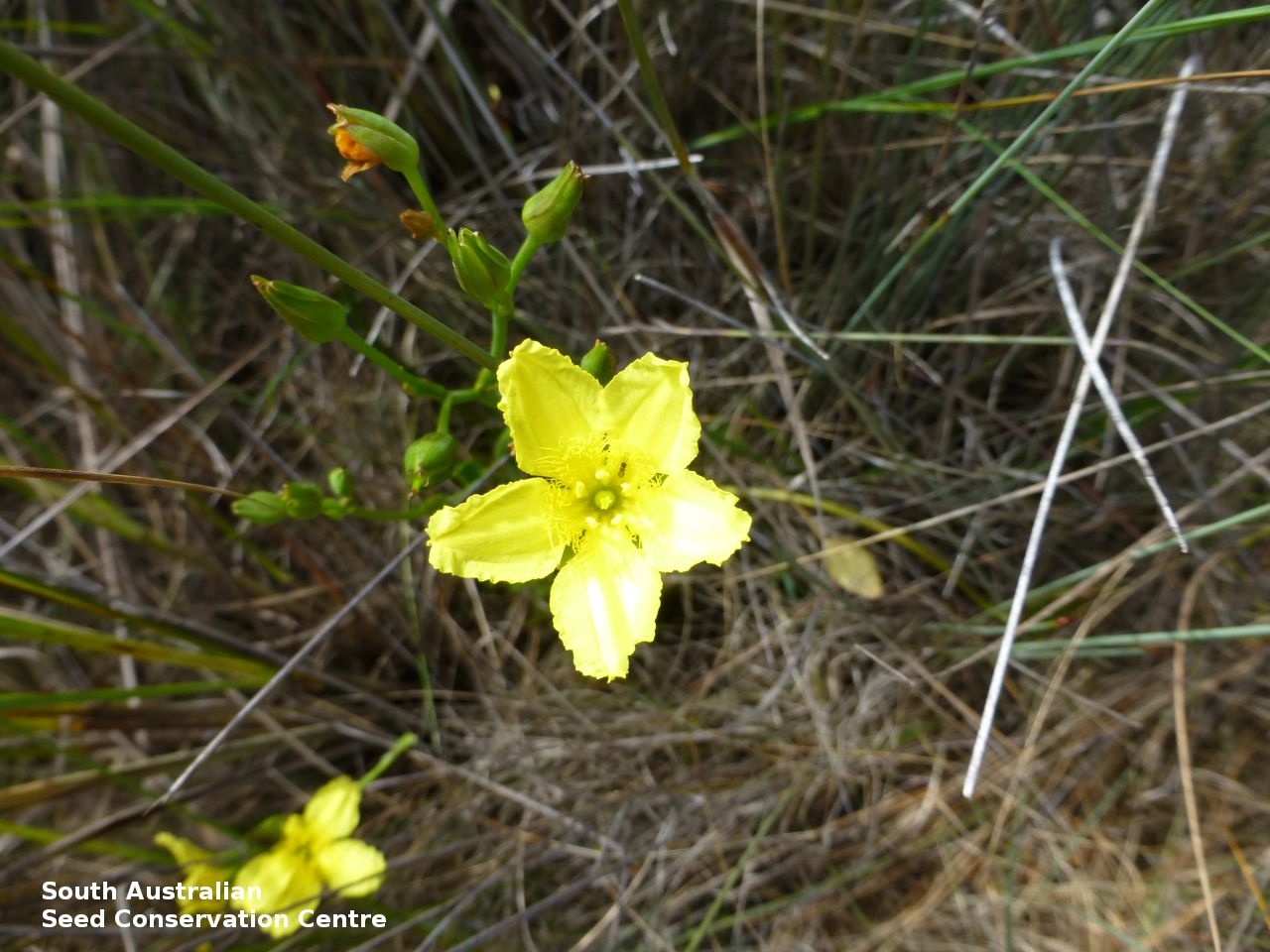
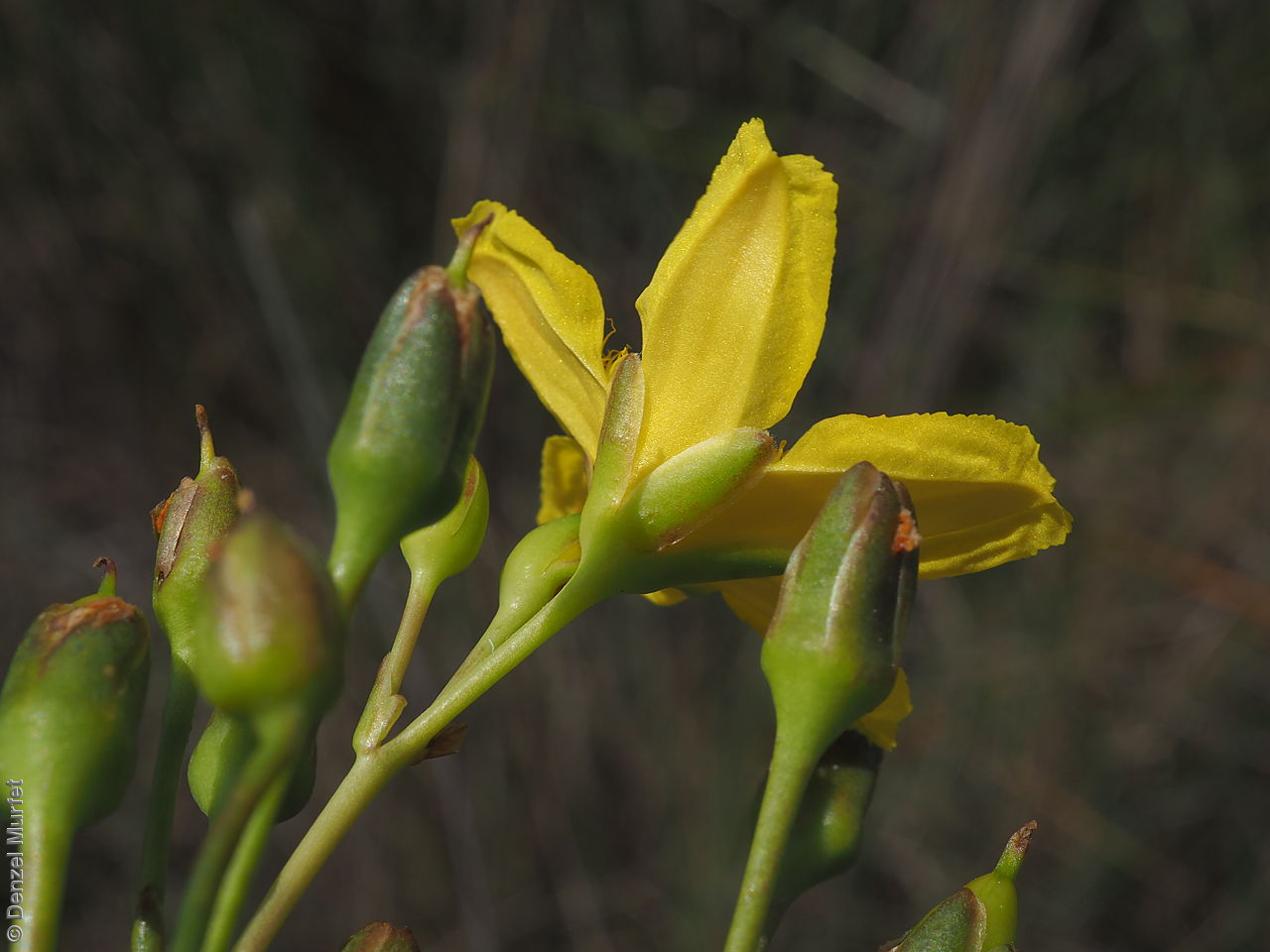
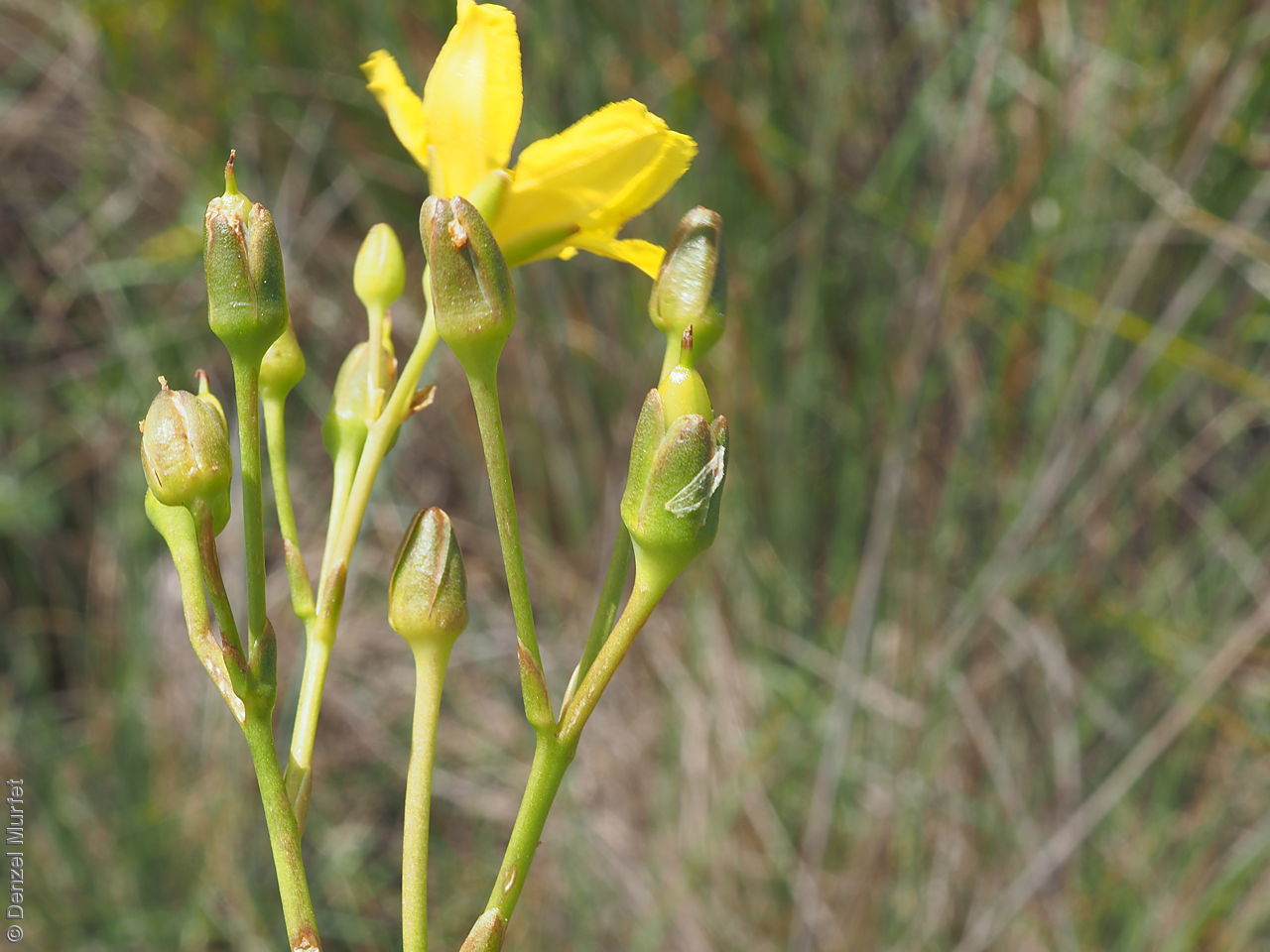
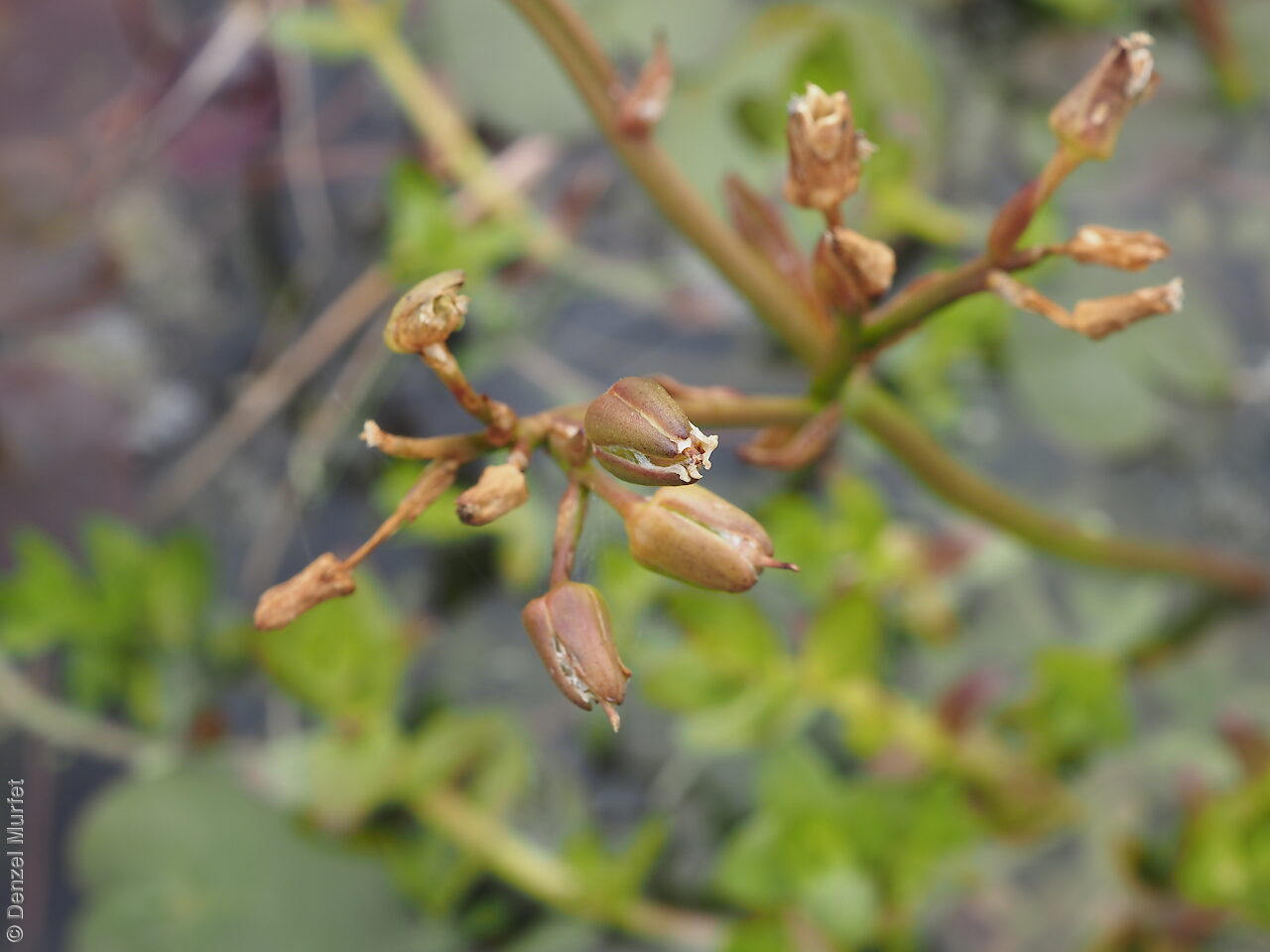
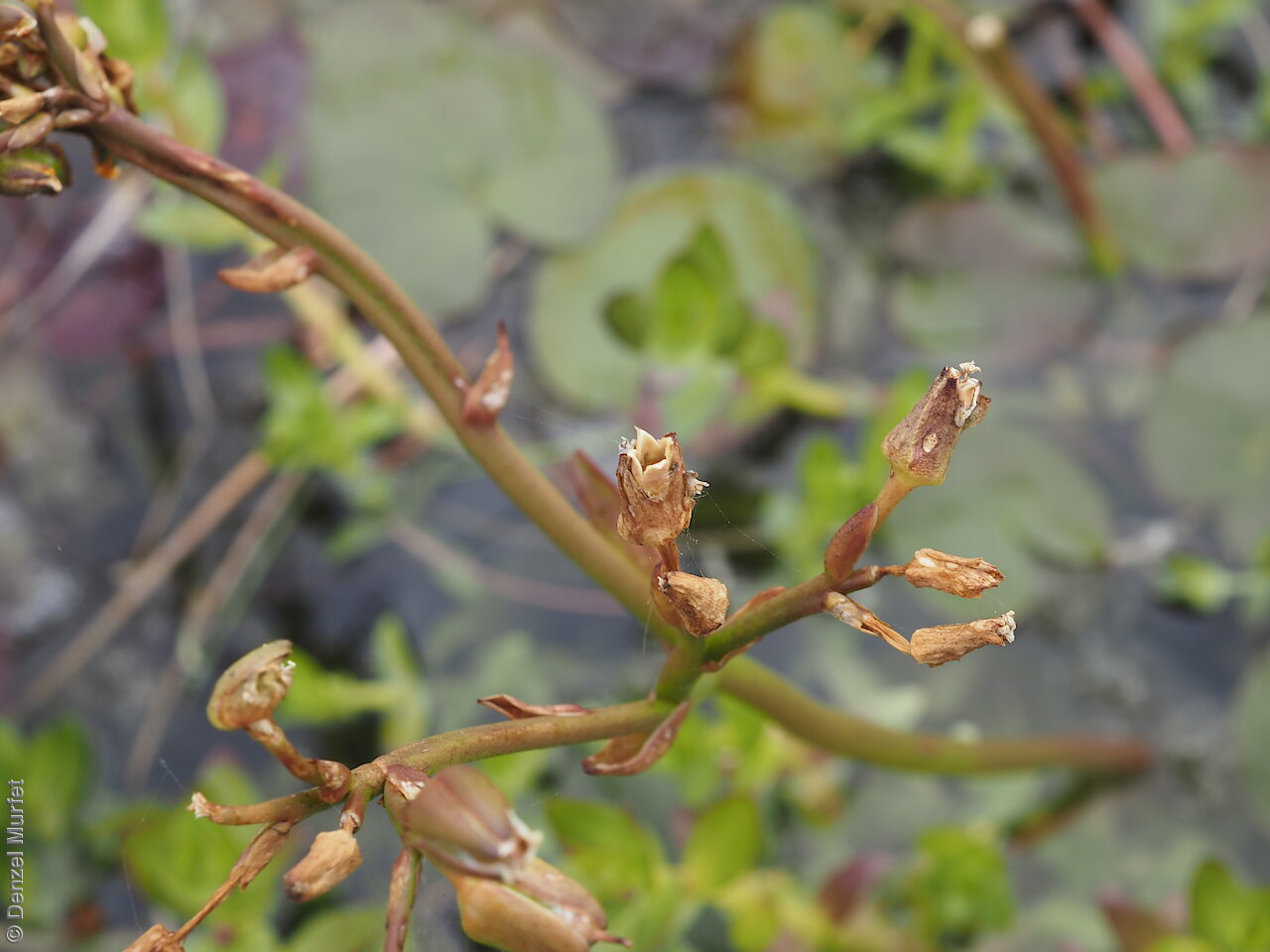
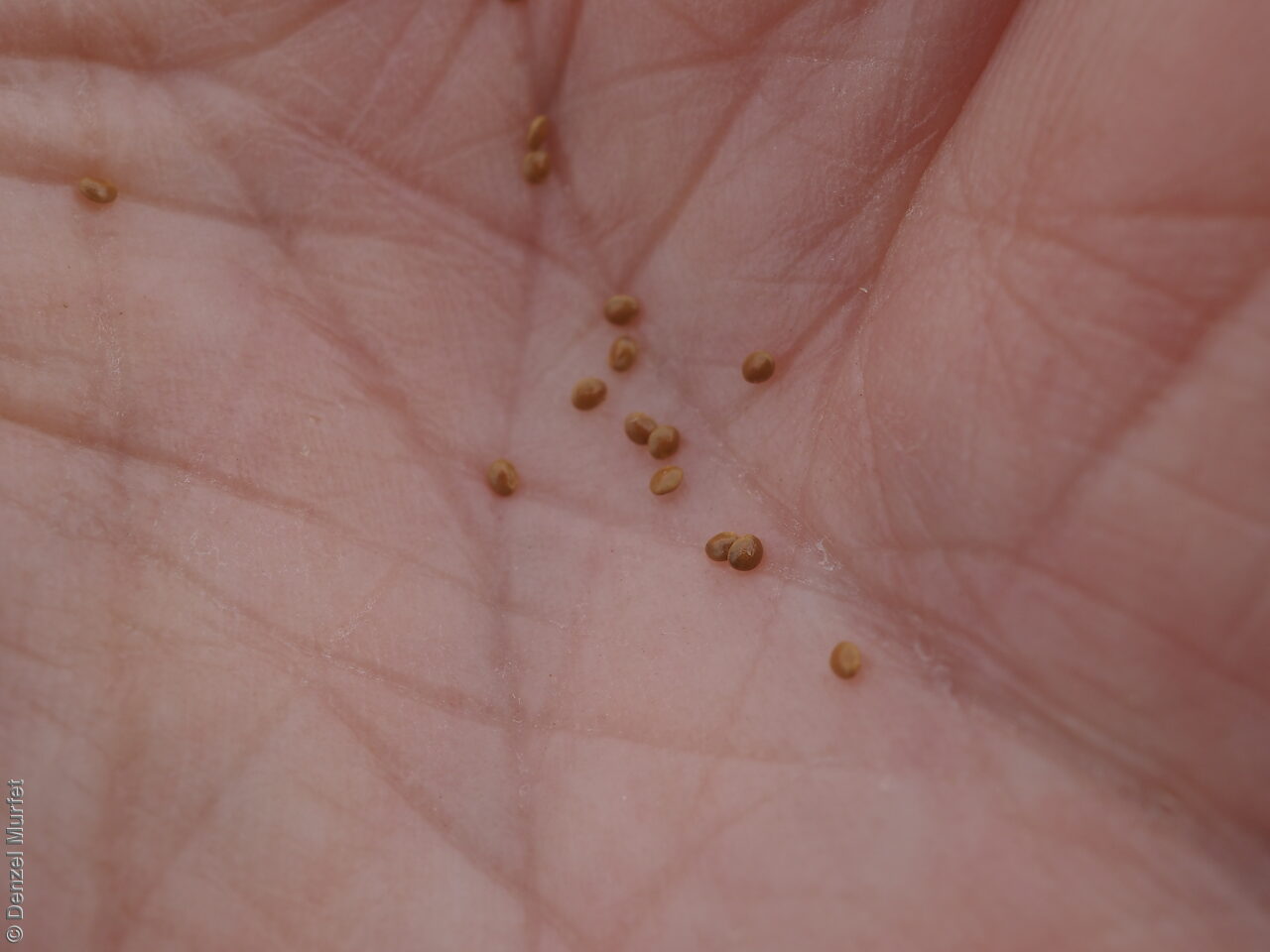
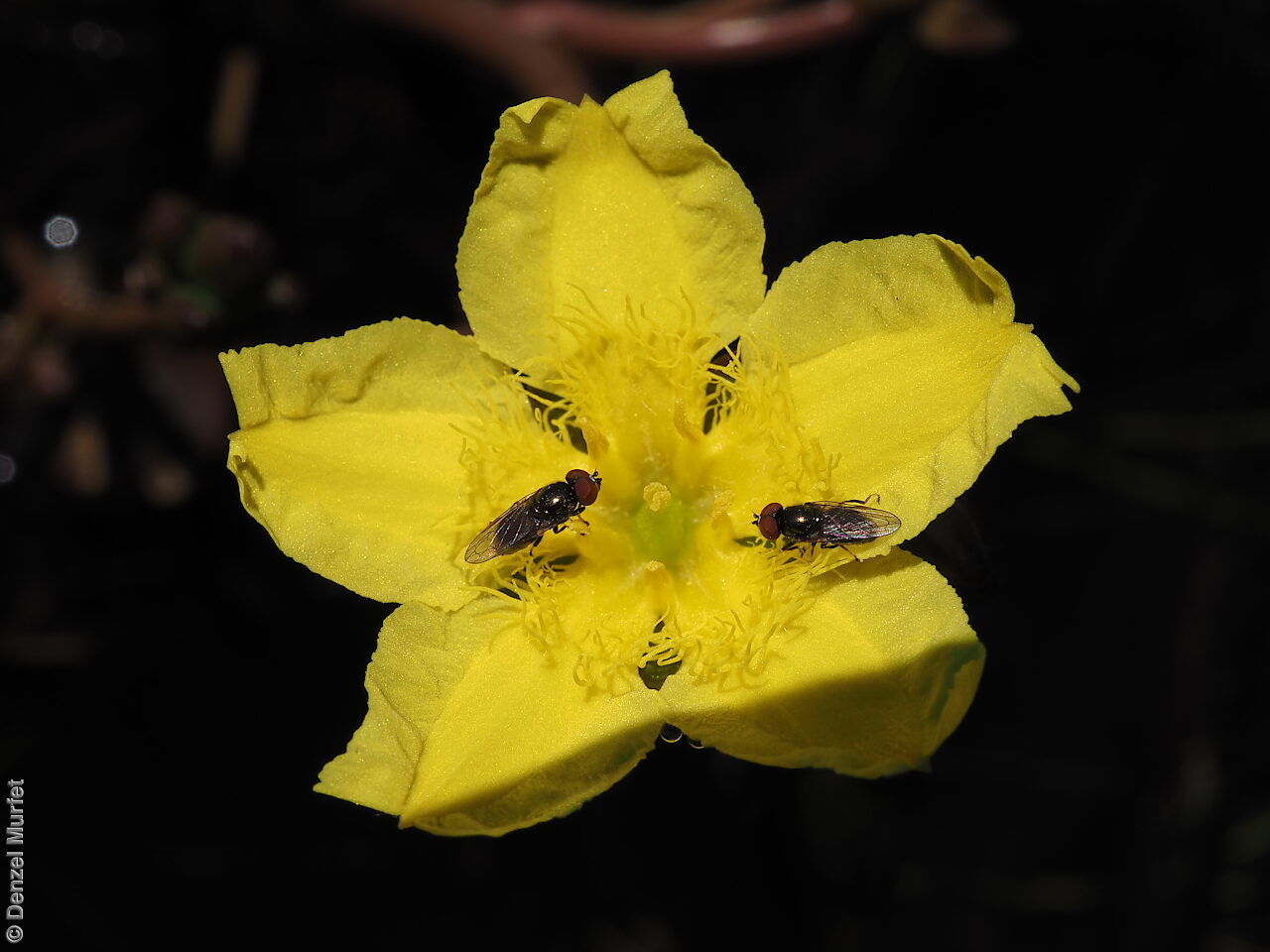
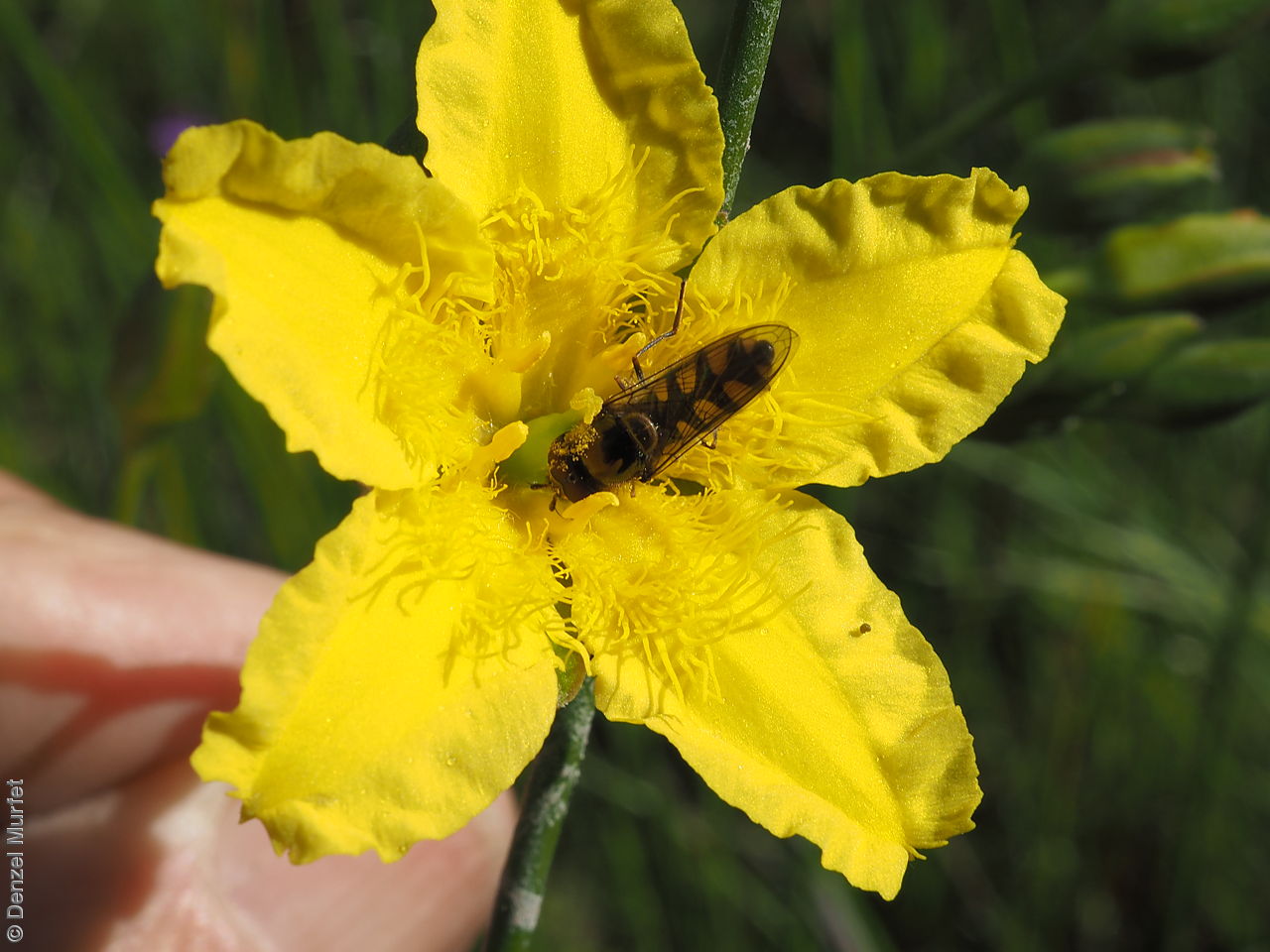
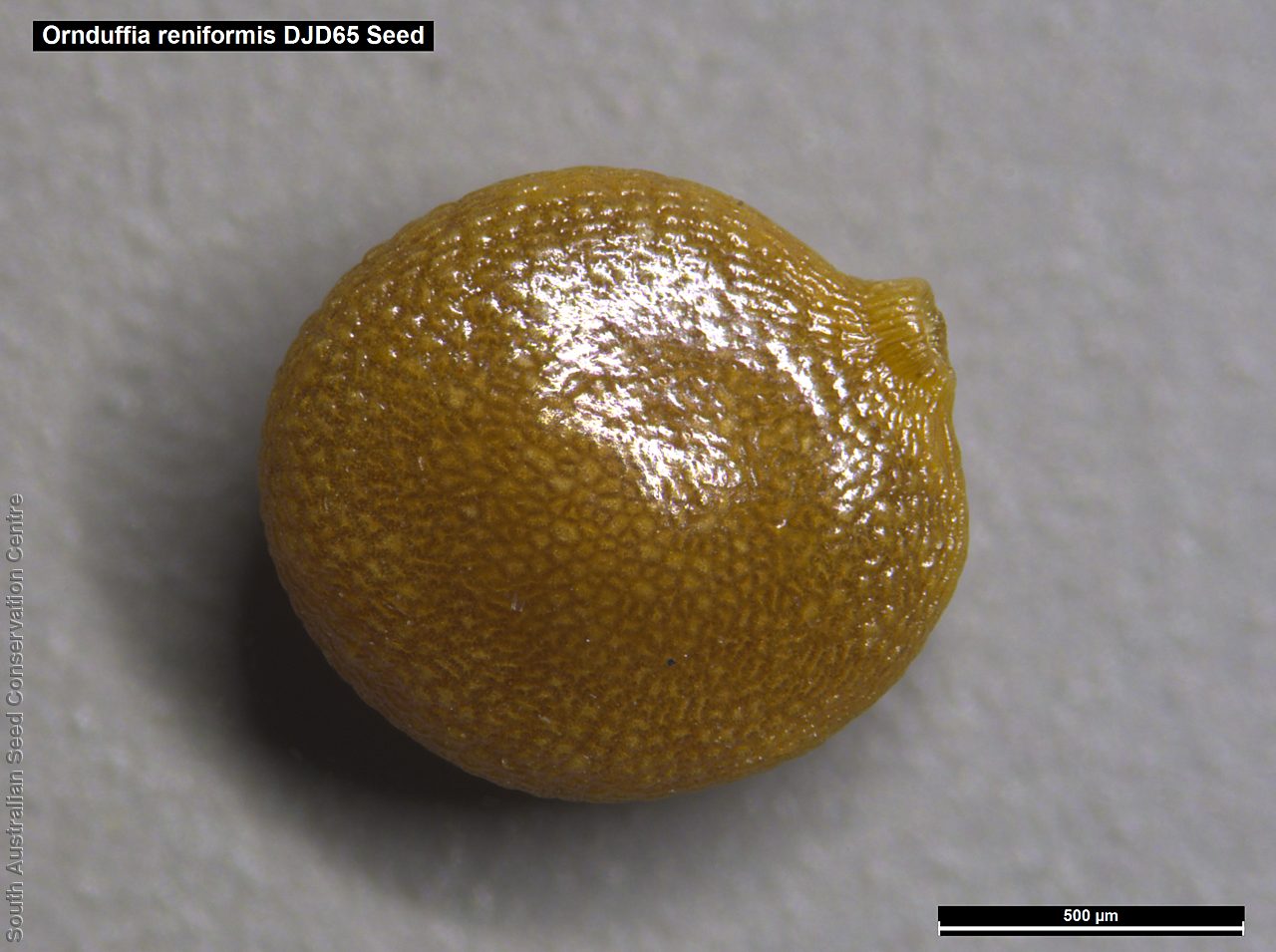
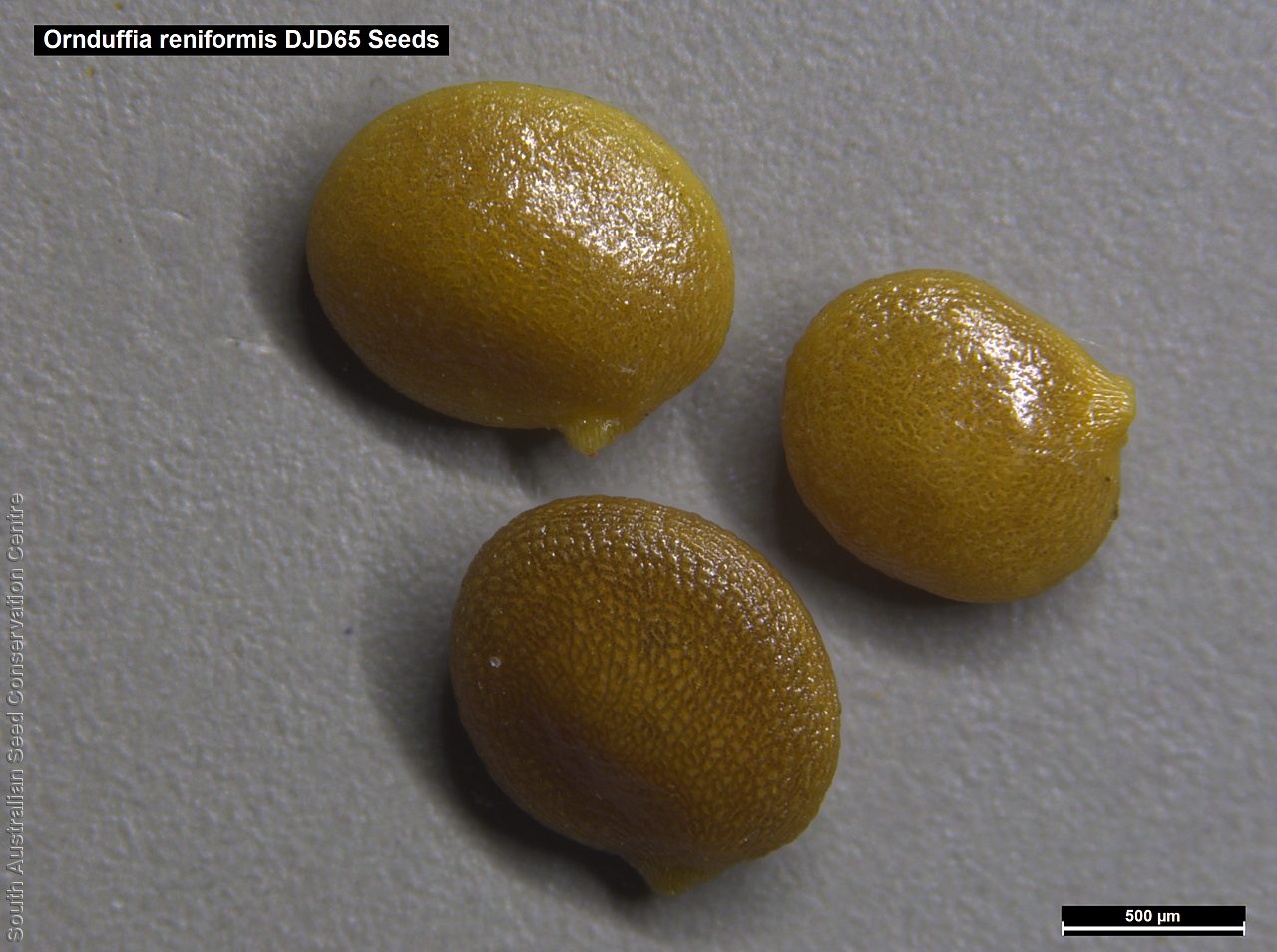


Botanical art
Prior names
Villarsia reniformis
Villarsia exaltata
Limnanthemum stygium
Nymphoides stygia
Etymology
Vallarsia named after Dominique Villars (1745-1814), a French botanist and physician. Reniformis from Latin meaning kidney shaped; referring to the shape of its leaves.
Distribution and status
Found on Kangaroo Island, southern Mount Lofty Ranges and the South-east in South Australia, growing in still fresh water in permanent or near-permanent swamps or temporarily inundated depressions. Also found in Queensland, New South Wales, Victoria and Tasmania. Native. Common in South Australia. rare in Queensland. Common in the other states.
Herbarium regions: Southern Lofty, Kangaroo Island, South Eastern
NRM regions: Adelaide and Mount Lofty Ranges, Kangaroo Island, South East
AVH map: SA distribution map (external link)
Plant description
Stoloniferous perennial aquatic herb to 130 cm high with floating and/or emergent leaves and few erect stems terminating in an inflorescence. Leaves broad-ovate to circular or reniform, to 8 cm long, glossy-green above, paler or purplish beneath. Inflorescence an open erect panicle near the summit of the flowering stem, with large yellow flowers. Flowering between October and March. Fruits are pale brown papery capsule to 12 mm long. Seeds are pale orange ellipsoid seed to 1.2 mm long and 1 mm wide, with a slight wrinkled surface.
Seed collection and propagation
Collect seeds between December and May. Collect mature capsules, those that are turning a pale straw colour and contain hard seeds. Can collect individual capsules or break off the whole fruit spike. Place the capsules in a tray and leave to dry for two weeks. Then rub the capsules gently by hand to dislodge the seeds. Use a sieve to separate the unwanted material. Store the seeds with a desiccant such as dried silica beads or dry rice, in an air tight container in a cool and dry place. From one collection, the seed viability was high, at 96%.
| Location | No. of seeds (weight grams) | Number of plants | Date collected | Collection number Collection location | Date stored | % Viability | Storage temperature |
|---|---|---|---|---|---|---|---|
| BGA MSB | 5,000 (1.3 g) 5,000 (1.3 g) | 30 | 3-Dec-2004 | DJD65 South Eastern | 1-Apr-2006 | 96% | -18°C |
| BGA | 6,200 (1.074 g) | 5-Dec-2021 | DJD4066 Kangaroo Island | 7-Jul-2022 | 95% | -18°C, -80°C |
Number of plants: This is the number of plants from which the seeds were collected.
Collection location: The Herbarium of South Australia's region name.
% Viability: Percentage of filled healthy seeds determined by a cut test or x-ray.